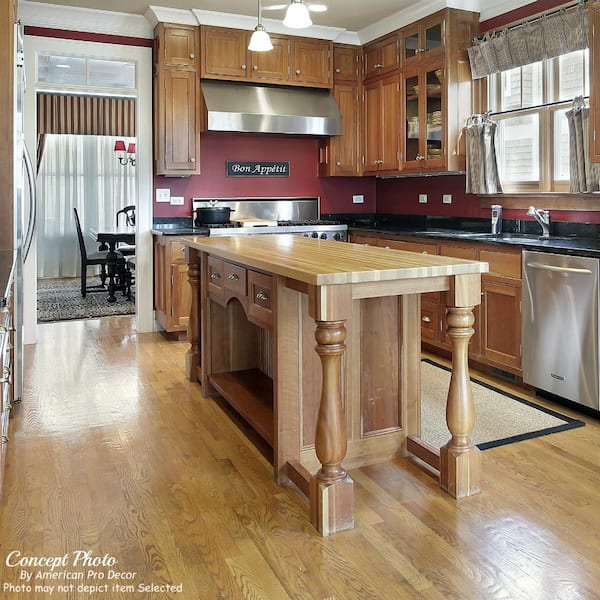Make Your Kitchen Island Stick Out with Customized Legs For Kitchen Island
Make Your Kitchen Island Stick Out with Customized Legs For Kitchen Island
Blog Article
Crucial Variables to Take Into Consideration When Picking Legs For Cooking Area Island
Choosing the appropriate legs for a kitchen area island involves a cautious assessment of several factors that can substantially influence both performance and visual appeal. As we check out these elements, it ends up being clear that each choice can have far-reaching ramifications for the total kitchen experience.
Product Options
When picking legs for a kitchen island, recognizing the numerous material choices is crucial for achieving both aesthetic allure and architectural integrity (Legs For Kitchen Island). The option of product significantly affects not only the sturdiness of the island yet additionally its overall style and performance
Timber is a preferred choice, providing warmth and adaptability. Strong woods, such as oak or maple, give strength and can be stained or painted to match the kitchen design. Metal legs, frequently made from stainless-steel or functioned iron, add a commercial and modern-day feel while making certain durability and stability. These products are immune to put on and can sustain significant weight, making them excellent for bigger islands.
Another option is crafted products, like MDF or plywood, which can be much more affordable while still offering a variety of surfaces. Nevertheless, they may not give the exact same level of security as solid timber or steel. Materials such as acrylic or glass can develop a contemporary appearance, though they may call for extra assistance to guarantee security.
Eventually, the selection of material for kitchen island legs must align with the preferred functionality and the total theme of the kitchen area.
Style and Style

When thinking about design, the shape and coating of the legs are important. Tapered legs can give a sense of agility and elegance, while thicker, extra robust legs can share strength and stability. In addition, the surface-- be it repainted, stained, or all-natural-- need to match the kitchen cabinetry and countertop products to develop a unified look.
Additionally, the design of the legs can likewise mirror individual taste. Custom-made or decorative legs, such as those featuring complex makings or unique geometric shapes, can function as centerpieces, adding character and character to the cooking area. Ultimately, the best option will certainly not just enhance functionality however likewise boost the visual appeal, making the cooking area island a standout feature of the home.
Elevation Considerations
Picking the appropriate height for kitchen island legs is crucial, as it directly impacts both performance and comfort. The conventional elevation for a kitchen island generally ranges from 36 to 42 inches, straightening with usual counter top heights.

It is also important to make up individuals' preferences and elevations. Personalizing the elevation can make sure a comfortable experience for all member of this the family, making the cooking area island a much more functional and enjoyable space.
Weight Assistance
Guaranteeing ample weight support for cooking area island legs is important for both safety and security and performance. The cooking area island frequently offers multiple functions, consisting of cooking, eating, and additional storage, demanding a robust support framework. When selecting legs, it is important to take into consideration the overall weight capability called for based on the island's meant usage and the products that will be put on it.
The selection of product for the legs plays a significant function in their weight-bearing capacities. Strong wood, metal, and durable compounds usually provide exceptional toughness contrasted to lighter materials. Furthermore, the layout of the legs-- whether they are straight, tapered, or have a pedestal kind-- can influence their ability to distribute weight effectively across the structure.
Constantly seek advice from the maker's specs concerning load restrictions to make certain that the legs can sustain the intended weight without compromising safety and security. In summary, selecting cooking area island legs with appropriate weight support is essential for developing a risk-free and functional culinary room.
Setup and Upkeep
Appropriate installment and maintenance of kitchen area island legs are vital for making sure long life and stability. This typically entails securing the legs to the island base utilizing ideal bolts, guaranteeing that the legs are level and straightened.
As soon as installed, regular maintenance is essential to maintain the integrity and appearance of the legs - Legs For Kitchen Island. For wooden legs, regular cleansing with a wet towel and application of suitable wood polish can avoid wetness damages and keep their coating. Steel legs might require a gentle cleaning solution to remove grease and grime, complied with by a dry fabric to stop corrosion development
In addition, check the legs frequently for indications of wear or damage, such as cracks or loose joints. Tightening screws or screws as needed can likewise prolong the life-span of the legs. By adhering to these installation and useful link upkeep practices, homeowners can make sure that their kitchen island continues to be strong and aesthetically appealing for many years to come.
Verdict

Aesthetic comprehensibility is extremely important in selecting the style and layout of legs for a kitchen island, as these elements considerably affect the overall ambiance of the area. Conical legs can give a sense of lightness and beauty, while thicker, a lot more durable legs look these up can convey strength and stability.Selecting the proper elevation for cooking area island legs is crucial, as it directly impacts both performance and comfort. In summary, choosing kitchen area island legs with adequate weight support is vital for producing a practical and risk-free cooking area.
In final thought, choosing legs for a kitchen area island requires cautious consideration of different elements, including material alternatives, design, elevation, weight assistance, and setup.
Report this page